Gigabyte's i-RAM: Affordable Solid State Storage
by Anand Lal Shimpi on July 25, 2005 3:50 PM EST- Posted in
- Storage
Using the i-RAM
To begin our testing, we loaded up the i-RAM with four 1GB DDR400 sticks. We didn't have any large DDR200 modules, so unfortunately we had to go with more modern DDR400. Using DDR500, DDR400 or DDR200 doesn't change performance at all, since the Xilinx controller runs them all at the same frequency.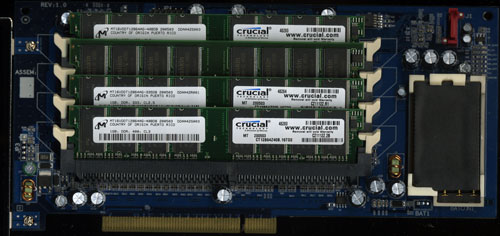
Powering the system on revealed the installation was a success; the BIOS reported the presence of the i-RAM as a regular storage device connected to our SATA controller:

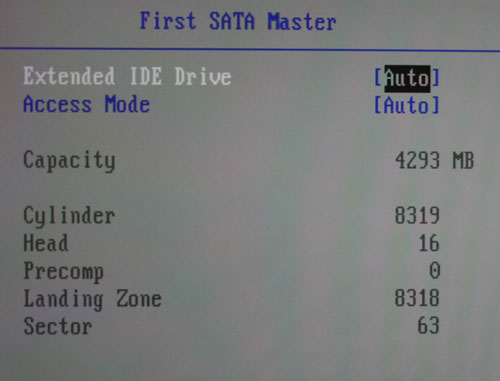
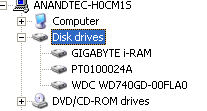
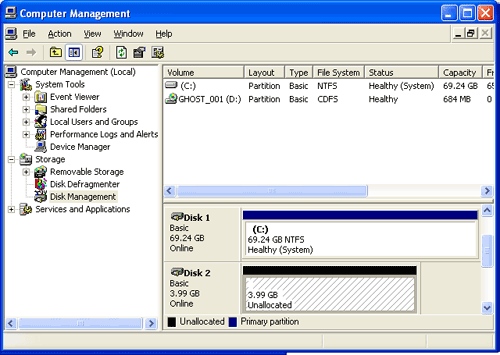
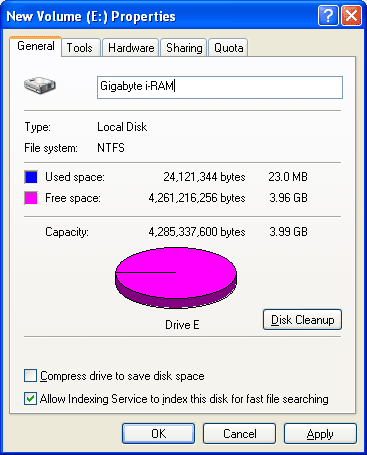
Also, all disk accesses are instantaneous; formatting the thing takes no time at all, and you can even "defragment" it (although, you get no benefit from doing so).
With the setup done, it was time to evaluate the i-RAM as more than just a novelty silent hard drive. Armed with our 4GB partition, we started testing...
The Test
We ran all of our tests on the following testbed unless otherwise noted:ASUS A8N SLI Deluxe nForce4 SLI Motherboard
AMD Athlon 64 FX-57 Processor
1 GB OCZ 2:2:2:7 DDR400 RAM
Seagate 7200.7 120 GB Hard Drive (boot drive)
Western Digital Raptor W740GD (test drive)
Gigabyte i-RAM w/ 4x1GB DDR400 modules (test drive)
We used the latest nForce 6.53 and ForceWare 77.72 drivers for our test bed, and paired it with the recently released GeForce 7800 GTX.










133 Comments
View All Comments
pieq3dot14 - Tuesday, July 26, 2005 - link
I'd like to see how this would change the overall latency of a system. I have a pretty nice home studio, and I can see using this as a boot drive, and then recording off to a raid array. With all the random accesses coming from the solid state drive, and only sequencial going to the raid, I'd think the latencies would drop significantly. Could be pretty handy, even extending the life of older systems.bwall04 - Tuesday, July 26, 2005 - link
Anand, first of all great review, it's nice to see some numbers on this.Would it be possible to bench a few tests again with 2GB of system memory? I can vouch that 2GB makes a noticeable difference when loading any game. I realize that you were going for an "enthusiast" level machine but games like HL2, Doom3,and Battlefield 2 has started a push with the high end to upgrade to either 2x1GB or 4x512MB.
racolvin - Tuesday, July 26, 2005 - link
Could they perhaps have gone with a full-size card and then oriented the DIMM slots perpendicular to the mobo? I had something like that ages ago in an Amiga that worked well from a size perspective. It might get them to 8Gb :)somu - Tuesday, July 26, 2005 - link
cost of this unit was increased 3 times.then it went from sata2 to sata.
Real life performance is not as gd as i expected, when i first heard i was excited to see them working on removing the bottleneck but going from 13 second load time to 10 second doesnt warrant the cost of the 150 card and 4 gb ram.
shaw - Tuesday, July 26, 2005 - link
#1 4GB space = poop#2 Still bottlenecked by the SATA bus
I just hope this is the beginning of a bright future, but for now I'm not impressed one bit.
IvanAndreevich - Tuesday, July 26, 2005 - link
How about a Raid0 test with 2 of these cards :)JNo - Tuesday, July 26, 2005 - link
How about Read the Frickin Article?audiophi1e - Tuesday, July 26, 2005 - link
I think the more useful implementation is to have the RAM pre-installed onto the drive. And I'm not talking RAM sticks. I'm talking about these guys at Gigabyte contacting Samsung, Micron, or Crucial to directly supply the chips and directly solder them onto 5.25" plates. I think in the space of a 5.25" bay, you can fit 2 of these said plates. It won't be hard to think that they'd be able to fit 15GB of RAM in a 5.25" drive's space.Then with the remaining space, mount a MUCH larger battery. Have the battery be able to last DAYS, not hours. This will set people a little more at ease. It will sure make me feel better. (and no, this 5.25" ramdrive will not be using a molex connector. Simply put in a dummy PCI card to allow the 5.25" to draw power from it)
The fatal flaw in their product design is that most people simply won't have that many RAM sticks laying around to make this thing useful. Why not supply the RAM, and in the process increase the possible size from 4GB, to something much more useful. If we already know that only 'power users' with little budget restraints will buy this, then just supply it the way we know they want it: Big.
Zebo - Tuesday, July 26, 2005 - link
Yeah one really needs about 15-20G to make this a livable reality. And that would cost about 3K and about 4K if they did it right i.e. ultra SCSI or even PCIe interface.Sindar - Tuesday, July 26, 2005 - link
If they got real serrious tunned it up with on pcb ddr3. Made it something like a ZIF socket thing. Gave it a direct bus to the chip, changed the memorie contoler to let it throtle wide open. Wrote drivers, OSes to just use it. It might be like a really fast bios set up for the OS. At first it could be like an extra, but as costs came down maybe it would be intergrated into the motherboard. Humm nearly alomst instant boot up...it's a dream, even if it's only mine!